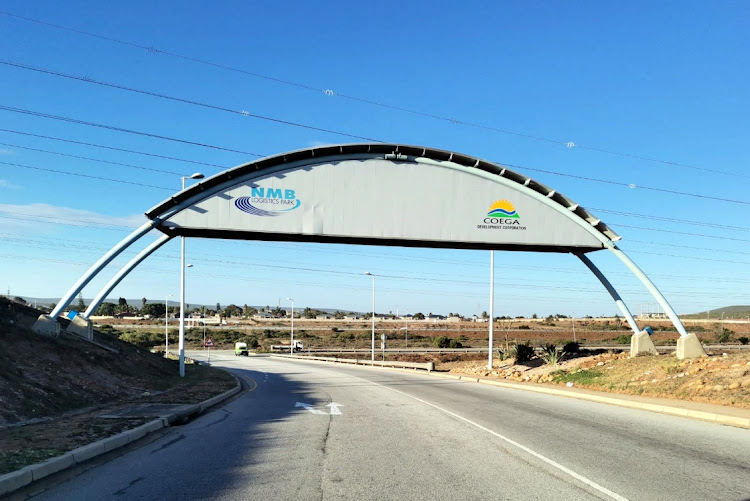
Article courtesy of Business Day.

The literature is replete with case studies that illuminate how special economic zones (SEZs) have been instrumental in catalysing industrial development. It also holds great appeal in a country’s quest to crowd-in private sector investment through both domestic and foreign direct investment flows.
SA’s SEZ programme has received mixed reviews over the years. Some SEZs have been extremely successful, fulfilling the goals and objectives of the programme, while others have struggled. Consequently, in the recent past the government has had to review the programme with a view to addressing failures and challenges. This has led to a new approach to the implementation of the SEZ programme.
The evolution of the SEZ programme can be characterised by three phases. Phase one (2000-2010) comprised the development of industrial development zones (IDZs), which were largely focused on export-orientated value-added manufacturing activities, close to the ports of entry. Phase two ran roughly between 2011 and 2019, when the SEZ policy was published and the Special Economic Zones Act (No 16 of 2014) was operationalised. Ten SEZs were identified in 2012 and by March 2019 five of these had been designated, increasing the total number of SEZs to 10.
Eight years into its implementation the programme continues to show resilience. There are now 13 investment projects at different stages of construction across the SEZs. These are expected to be operational before the close of 2023/2024 and will add to the 188 operational companies across the 10 designated SEZs. The cumulative rand value of these investments is estimated to be just more than R26bn. The related number of direct/operational jobs that have been created is about 23,281.
In August 2019 the cabinet directed that the department of trade, industry & competition should play a more active role in the planning, development and management of SEZs. This was in effect the start of phase three. In response to a number of implementation challenges, the department developed an expanded/inclusive approach that is underpinned by industrialisation, transformation and a capable state.
SEZs will also form part of the district development model, in which all spatial development initiatives will be consolidated under a single plan within each district or metropolitan municipality. It is anticipated that this will help re-engineer the role of district and local municipalities within the economy.
This means greater involvement of the department of trade, industry & competition in the development of SEZs, through shared ownership. Successful SEZs have demonstrated the significance of an integrated approach in which national government plays a strong and decisive role in supporting provinces and municipalities. For SEZs that are still to become operational and the new ones, the national government is now actively involved in their planning and development. The department is no longer simply a regulator and adjudicator of applications, but an active participant in the planning, development and management of the zones.
This approach has been piloted in the Tshwane Automotive SEZ in Silverton, which was established through an inter-governmental agreement between the department, the Gauteng department of economic development and the city of Tshwane. This multilevel governance structure is responsible for the initial investment capital, land acquisition, risk sharing and investment promotion. Ford SA’s contribution is a capital investment of $1.05bn (R15.8bn).
The investment value of the 10 suppliers in the zone is R4.5bn, against an overall projected investment of R4.2bn. The total number of permanent jobs created by them is 2,580, against a projected target of 2,080 to be realised during the production ramp-up. Phase two is now set to begin. This is a mixed-use development consisting of an industrial node, retail and an automotive centre of excellence.
The role of the department of trade, industry & competition is to provide overall strategic guidance to the SEZ, and funding for top structures and related shared services, in terms of the rules of the SEZ Fund. It is also part of the governance structure overseeing and monitoring the SEZ.
Collaboration with the private sector is ongoing in the proposed Tubatse SEZ in Limpopo. The government is collaborating with a mining company that has a mining input supplier park. This will be integrated into the SEZ. The zone is also part of the development corridor, which includes private sector investments on the northern side of the zone, along the R555.
The investment consists of a 30,000m² retail shopping mall, 100-bed private hospital, a state-of-the-art private school and an integrated human settlement of more than 3,500 households. These investments will transform the entire region and has the potential to be developed into a self-contained smart city.
This SEZ demonstrates the potential for a number of different public-private models. These include the assembly of land parcels with secure title and development rights by the government for lease to private zone development groups, and a build- operate-transfer approach to on-site zone infrastructure and facilities with government guarantees and/or financial support. Private management can also be contracted for government-owned zones or lease of government-owned assets by a private operator.
The partnership with the private sector is gaining momentum in the proposed Vaal SEZ. The SEZ is a multisector and a multisite zone that will regenerate the area, supporting new economic activity. A key element of the business case for the SEZ are strategic partnerships with major corporations such as Sasol and ArcelorMittal as they embark on their decarbonisation journeys. As emphasised by the president at the presidential imbizo in Sedibeng district, the Vaal SEZ and the Vaal river smart city development constitute the primary interventions around which the government’s collaboration with the private sector will pivot.
The speed and success at which the Tshwane Automotive SEZ was developed bears testimony to what can achieved with strong partnerships between the private and public sectors. The government must still provide an enabling environment and institutional support. However, the private sector will be part of the strategic decision-making with a view to ensuring that the operations of our SEZs are aligned with the needs of the investors and to the overall success of the programme.
Though there has been no official declaration, 2023 will be “the year of SEZs” for the department of trade, industry & competition, which is ramping up the implementation of the SEZ programme. The key focus would be dedicated support to the least performing zones, aggressive marketing, accelerated infrastructure development and co-ordination of stakeholders. More importantly, the department will be accelerating the planning and designation of new SEZs such as the proposed Namakwa SEZ in Northern Cape, Vaal SEZ in Gauteng, Fetakgomo-Tubatse SEZ in Limpopo and Bojanala SEZ in North West.
SEZs have become an important policy tool of choice for governments seeking to accelerate industrialisation, development and growth. According to the African Economic Zones Organisation there are 203 operational SEZs in Africa and 73 projects have been announced for completion in 47 of the 54 countries.
In supporting the objective of enhancing intra-Africa trade and investment, the 11th Council of Ministers of Trade held in Gaborone, Botswana, from February 11-12 agreed on the ministerial regulation on SEZs to open the African market for goods made in SEZs in Africa to be traded preferentially.
• Majola is deputy trade, industry & competition minister.
